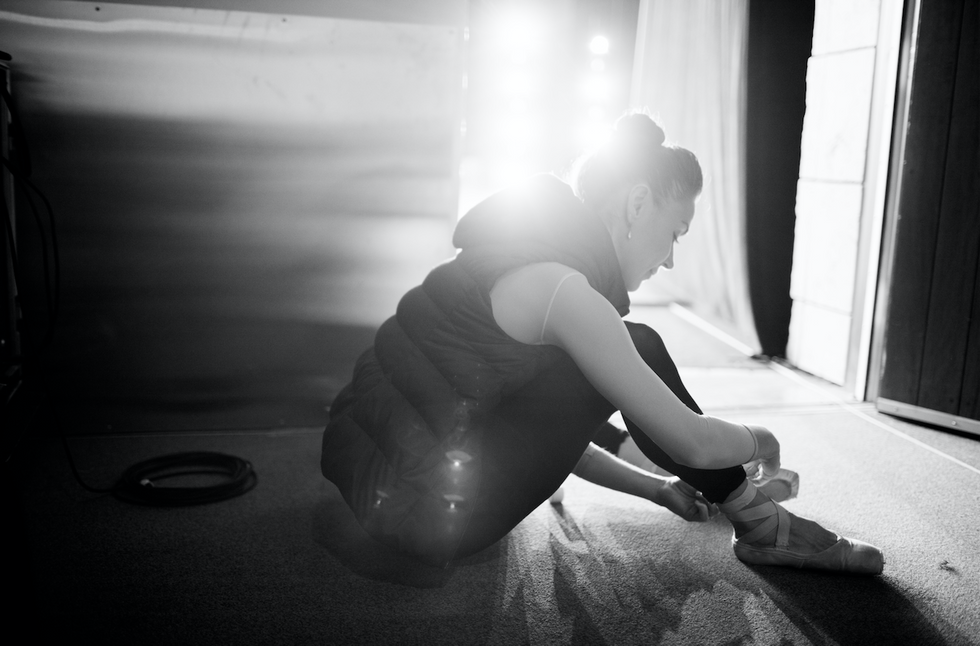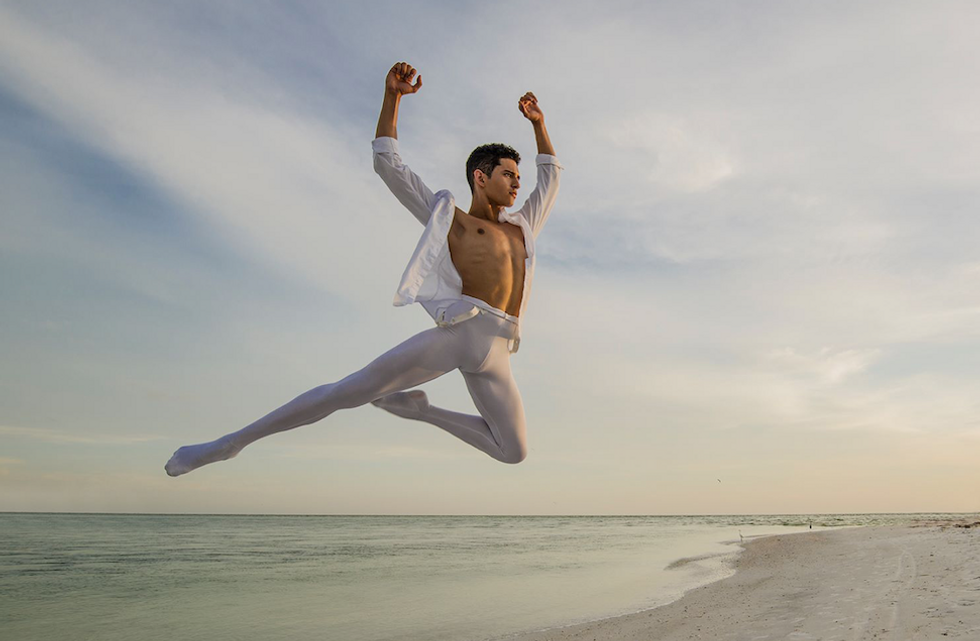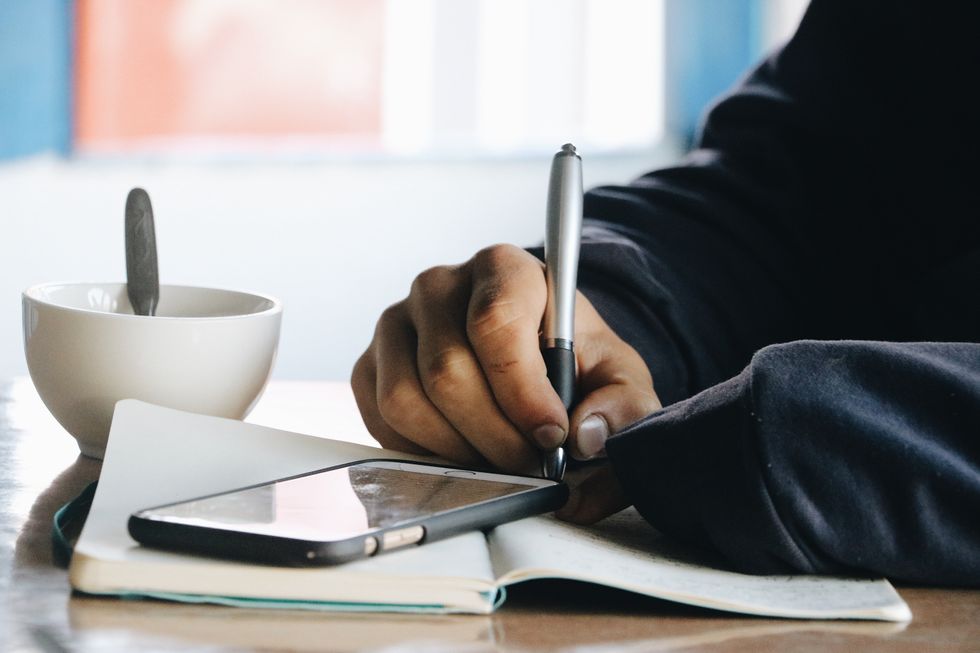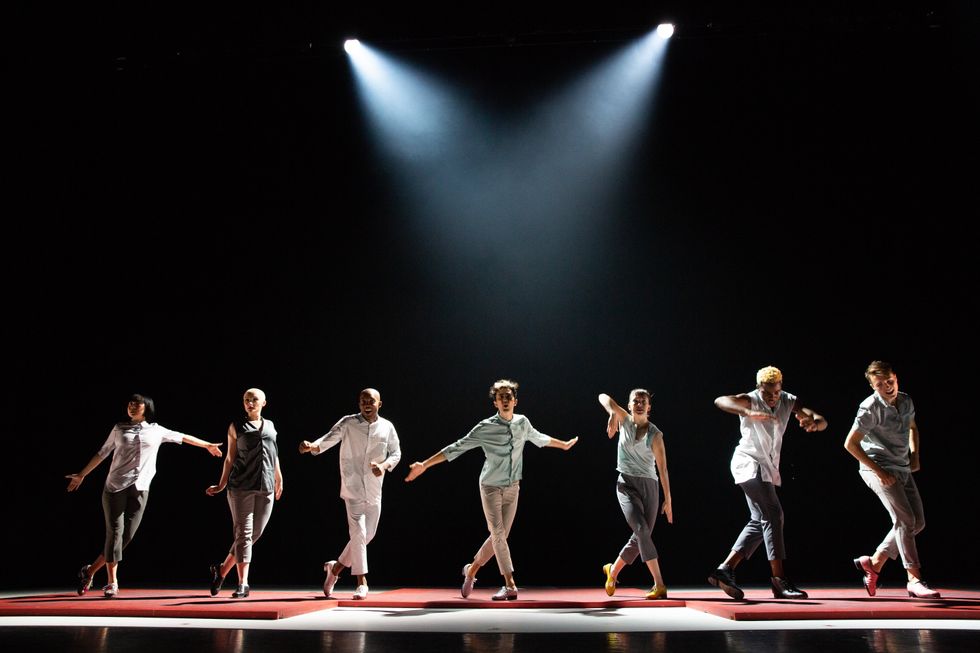What You Can Do After Each Performance to Become a Better Dancer
When Patricia Delgado was a young dancer in Miami City Ballet, she always felt the need to keep practicing immediately after a performance. “It was a bit of a neurosis,” she says. “I felt like I should use the warm, energized feeling to work on things for the future.”
Then a series of injuries and surgeries forced her to rethink her post-performance practice. Instead of continuing to push herself, she started to take some quiet time to de-stress and be grateful for what she had been able to do. She was truly surprised by the results. “I started to wake up with my head filled with ideas of how to make that new day productive,” she says. “It’s like I was getting out of my own way by doing some meditation after the show.”

Karolina Kuras, Courtesy Delgado
Taking time to reflect gives you a chance to recognize the full value of the work you just did and take control of how you want to proceed with future performances. When there are 35 Nutcrackers to dance, it’s tempting to start counting them down rather than using each show as an opportunity to evolve. Learning how to calmly evaluate your work will ensure you don’t turn into an automaton, but actually learn and improve with every role.
Delgado believes that her real growth as a dancer came once she learned how to debrief productively. “Just give yourself an hour to wind down from the adrenaline before you start trying to figure out what happened and how to get better,” she says.
Step 1: Start With What Worked
To maximize your analysis, start with the positive. Joffrey Ballet dancer Xavier Núñez makes sure he thinks about all the things that went well before letting himself ruminate on the one or two things that didn’t. “I try to have my moment where I just enjoy what I did,” says Núñez.
People are naturally inclined to reflect on the negative. We can blame this inclination in part on human evolution—those ancestors who saw threats had a better chance of survival. However, disproportionate negativity is not productive either.
Frost advises performers to start their debriefing with a feeling of gratitude. “It makes them give themselves credit,” he says. “And that builds ownership of their progress.”
When people feel positive, they have more momentum and energy to improve. Frost asks performers to reflect on all the good things they did leading up to the show: how well they prepared themselves physically, how well they managed their diet and rest pre-show, what went well in the performance, where they improved, and what can they learn from this performance.

John Revisky, courtesy Joffrey Ballet
Step 2: Put It on Paper
After getting in a positive frame of mind, Frost suggests writing things down. This helps get those niggling thoughts and anxieties out of the head.
“Once it is out of your head and onto the page, you can move on,” he says. Frost suggests using three columns: the things that worked in one column, the things that didn’t in another, and the things you want to try down the center.
Writing things down this way is particularly beneficial for dancers who become fixated on what went wrong. “Focusing on the problem isn’t always going to solve it,” he says. “So, ask yourself ‘Is this a productive thought?’ ” Simply by posing that question, you can begin to train your focus.

Step 3: Take Any Criticism Calmly
Whether it is welcome or not, getting others’ opinions is essential. Your own subjective thoughts about your performance do not always give the full picture. You’ll often know when something went awry, but not why, nor how to fix it.
Still, receiving feedback calmly and openly requires a prepared mind. “It’s so easy to get defensive,” says tap dancer/choreographer Caleb Teicher. “I try to receive everything very plainly at first. I say thank you. Perhaps I felt that way too, or I’m not so sure.”
Frost says performers can deal with their emotions by developing skills like deep breathing. “One thing deep breathing does is occupy space in the brain, and so it allows you to reset,” says Frost. He encourages performers to see emotions as choices. “I always fall on the side of giving people responsibility and accountability, because that puts them in the driver’s seat.”
Feedback can be overwhelming when there are rehearsal staff, colleagues, friends, audiences and critics to contend with. Decide on a few people to really listen to. “I trust my fellow dancers,” says Joffrey Ballet dancer Derrick Agnoletti. “I always ask them: ‘Did you see anything?’ I ask the younger ones more because when you are fresh out of school, you are a little bit more nitpicky.”

Em Watson, courtesy Teicher
Step 4: Watch the Replay
Núñez fills out the picture further by watching performance videos. “We are visual learners and being able to see ourselves dance is really important,” he says. It took him some time to get comfortable using video as a tool. “Once I got over that barrier, I really grew as a dancer.”
He finds video helps you understand what sort of dancer you are. “I really try not to focus on all the things I don’t like. You have to look at yourself and understand how you can make those things better,” he says.
Teicher mostly dances in his own choreography, so video is doubly important. “I tend to step back and think less about my personal performance and more about how the whole piece is received, with my performance just being a part of it,” he says. The team discusses which sections seem to communicate something meaningful, which moments seem inconsistent with the world of the piece, and which ideas seem underdeveloped. They look for patterns in the work that went unnoticed while making it and then the pivotal moments when those patterns are broken.
Being able to understand your role in the bigger picture can be very helpful. “As a dancer you are a small part,” says Delgado. “I try to trust that the whole thing isn’t riding on me. I’m part of a bigger experience, and that’s a beautiful thing about art.”



